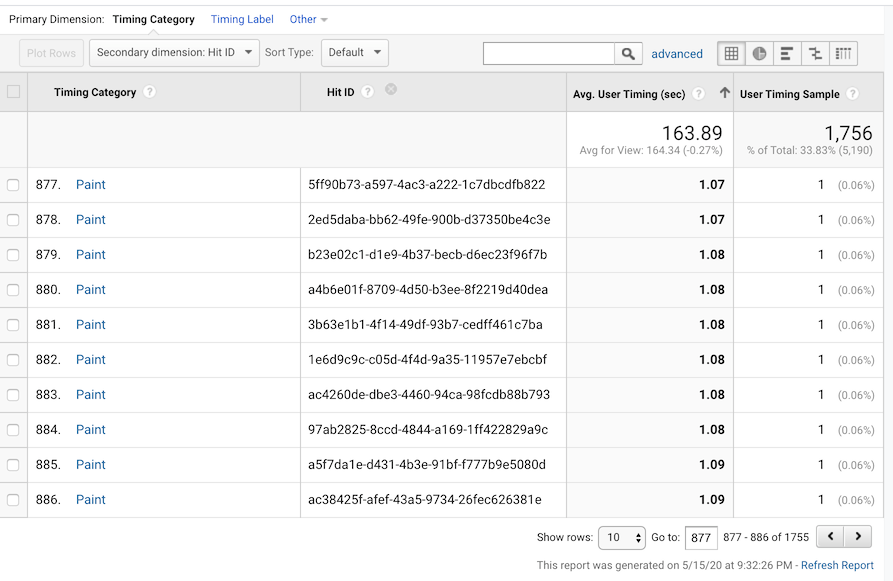Enhance Your Information Evaluation Using Second Dimension in Google Analytics
Exploring the abilities of secondary dimensions in Google Analytics opens up a world of opportunities for refining information analysis. The ability to dissect info better beyond the surface degree presents a nuanced sight that can form critical choices. By layering extra measurements onto primary information sets, a more complex narrative arises, losing light on customer communications and efficiency indicators. This vibrant strategy to information assessment holds the essential to unlocking concealed patterns and patterns that could change just how organizations translate their digital impact.
Recognizing Additional Measurements
In the realm of data evaluation, an important aspect to understanding is the idea of second dimensions and their relevance in drawing out much deeper insights from Google Analytics reports. Secondary dimensions in Google Analytics describe additional specifications that can be included in the main measurement, allowing for an extra comprehensive evaluation of information. By incorporating second dimensions, analysts can section and filter information to uncover patterns, trends, and relationships that may not be apparent when checking out the information all at once. These secondary dimensions can supply context and an extra extensive understanding of customer actions, traffic resources, and other essential metrics tracked by Google Analytics.

Benefits of Using Second Dimensions
When evaluating data in Google Analytics, the application of secondary measurements supplies important insights into individual actions and performance metrics. By adding an additional measurement to your primary information, you can dig much deeper right into the qualities of your site site visitors and their interactions.
In addition, additional measurements improve the context of your primary information, giving a much more thorough sight of individual engagement and performance metrics. On the whole, the use of additional dimensions in Google Analytics can considerably enhance the deepness and top quality of your data analysis, leading to even more informed decision-making and improved end results.
Exactly How to Add Additional Dimensions
By integrating additional measurements in Google Analytics, users can get much deeper understandings into their data analysis process, allowing for more extensive assessment of individual habits and efficiency metrics. Adding second dimensions is a straightforward procedure that can considerably improve the depth of evaluation. As soon as in the record, situate the "Additional dimension" tab above the data table.
Analyzing Information With Secondary Dimensions
Utilizing secondary measurements in information evaluation gives an extra extensive understanding of customer actions and efficiency metrics. By adding a secondary measurement to your main data embeded in Google Analytics, you can delve deeper into the qualities of your site visitors and their interactions. As an example, combining the primary measurement of 'source/medium' with the additional measurement of 'touchdown page' can expose which particular web pages are drawing in website traffic from various sources, helping you maximize informative post these pages for much better involvement.

In significance, evaluating information with additional dimensions encourages you to obtain valuable understandings into user actions, recognize fads, and make notified choices to improve the performance of your digital residential or commercial properties.
Ideal Practices for Additional Dimensions
In information analysis, including secondary dimensions effectively can dramatically improve the deepness of understandings stemmed from metrics and user habits patterns. When utilizing additional measurements in Google Analytics or any type of various other analytical device, it is crucial to abide by best methods to ensure the accuracy and relevance of the information evaluation.
One secret ideal practice is to visit this page carefully choose second dimensions that complement the key dimension being assessed. Choosing secondary measurements that offer extra context or more segmentation can provide an extra comprehensive understanding of the data. It is likewise necessary to avoid overcomplicating the evaluation by including also many second dimensions, which may result in complication or dilution of understandings.
Additionally, it is a good idea to trying out different mixes of secondary and primary dimensions to discover brand-new relationships and fads. Regularly refining the option and evaluating of additional dimensions based on the particular goals of the analysis can lead to more workable insights. By adhering to these ideal techniques, information analysts can leverage secondary measurements efficiently to boost the general data evaluation procedure and decision-making abilities.

Conclusion
In verdict, incorporating additional dimensions in Google Analytics is crucial for a comprehensive data analysis technique. By leveraging additional dimensions along with primary ones, experts and marketing you can find out more experts can reveal valuable understandings and relationships that can inform decision-making and optimize digital advertising and marketing strategies. Recognizing just how to properly utilize secondary dimensions and following ideal methods will certainly permit experts to extract meaningful information and improve their general performance metrics.
Second measurements in Google Analytics refer to added specifications that can be included to the main measurement, permitting for an extra thorough evaluation of information. By including additional dimensions, experts can section and filter data to uncover patterns, fads, and connections that might not be evident when looking at the information as a whole. Combining the key dimension of 'source/medium' with the secondary dimension of 'landing web page' can reveal which details pages are bring in traffic from different resources, assisting you maximize these pages for far better engagement.
One key ideal technique is to meticulously choose second dimensions that match the main measurement being examined. By following these finest methods, information analysts can leverage additional measurements successfully to enhance the general information analysis process and decision-making capacities.